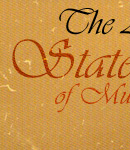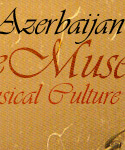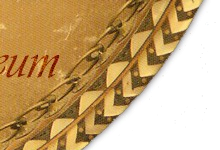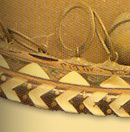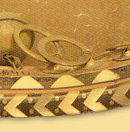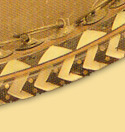Ganun
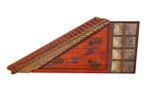
Listen

|
The ganun is a string instrument that belongs to the group of horizontally
laying instruments. It has been widespread in the Middle East, including
Azerbaijan, for centuries. Information on the canun can be found in the works of
Nizami Ganjavi, Mahammad Fuzuli and other Azerbaijani classical poets. One very
skillful player on the canun and chang was Mahsati Ganjavi, a 12th-century
poetess who had deep knowledge about Oriental musical science. The canun, which
was played mainly by women, is described in Fuzuli’s “Haft Jam”:
One night they had majlis and entertainment,
Sadness and melancholy
were forgotten,
Songs imperial sounded and the maiden of paradise
Charmed
everyone’s hearing with the canun, pleasing hearts.
The ganun was also depicted in miniatures. This instrument has reached the
present form through a long process of evolution. Uzeyir Hajibeyov noted that in
the past, the ganun was considered to be the perfect instrument: “Like playing
the piano, which is very important for every contemporary musician, playing the
canun was a must for musicians in the past, who had to be able to play it in
addition to their main instruments.”
The ganun is a flat wooden box of trapezoidal form. The bottom and lateral
sides are made of birch, nut or another firm wood. Three-fourths of the upper
part of the instrument is covered with a four-mm-thick board made of pine. The
other part of the instrument is covered with fish skin. There are three
resonators on the wooden part. On the skin part, there is a wooden bridge that
stretches along the entire width of the instrument. The strings are attached at
one end to special apertures on the instrument’s body, pass over the wooden
bridge and are fixed to the other end with pegs. Under the strings near the pegs
are the “lings” (iron levers), which make the strings rise and fall, changing
the pitch of the sound within a tone or semitone. The 24 lines of threefold
strings are fastened to the canun. Thus, the total number of strings is 72.
These strings used to be made of silk and gut. Now, kapron strings are used.
The ganun is placed on the knees and played with the ring fingers of both
hands, using iron thimbles under which are laid ebonite pluckers. The ganun is
tuned using an iron key shaped like a quadrangular. The canun is 800-900 mm
long, 380-400 mm wide, and 40-50 mm thick. The diatonic scale of the instrument
ranges from the “sol” of the great octave to the “ti flat” of the second octave.
The ganun is played in orchestras and ensembles of national musical instruments
as an accompanying and solo instrument.
|
